As racing returns to Churchill Downs after horse deaths, why the word 'safe' stays unsaid
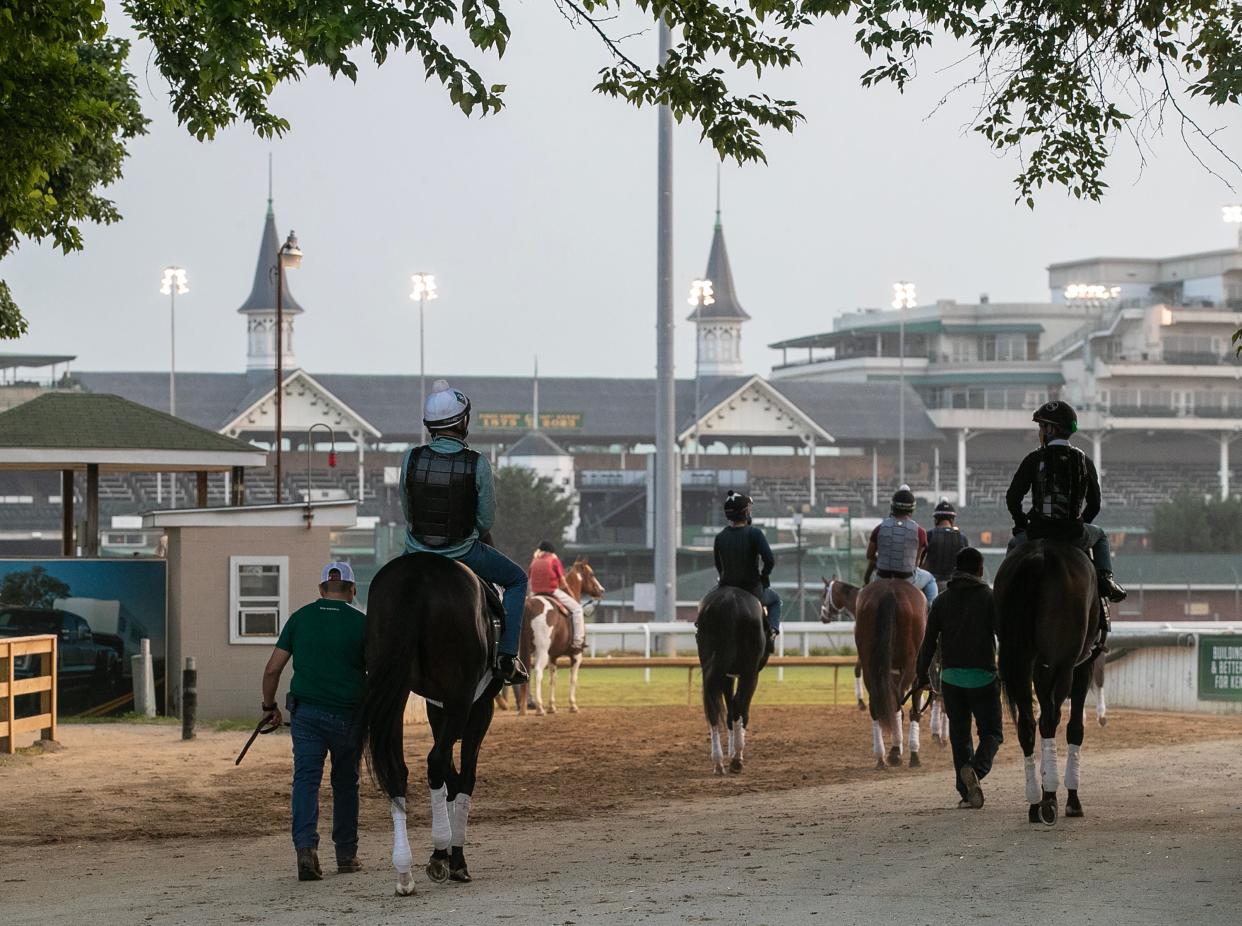
Mick Peterson shouted to make himself heard over the sound coming from a closet in a Lexington warehouse. It sounded like a muffled jackhammer.
Peterson opened the closet door, revealing a machine vigorously shaking a sample of dirt across a mesh screen.
“It’s definitely Fred Flintstone sort of stuff,” Peterson said.
But it wasn’t just any dirt. It was collected from a thoroughbred racetrack.
Peterson, a biomechanics engineer, is the director of the Kentucky-based Racing Surfaces Testing Laboratory, which analyzes the composition of horse-racing surfaces around the world.
The lab reviewed the make-up of the famed Churchill Downs’ surface prior to the lead-up to the 149th Kentucky Derby. Then, 12 racehorses died, and nine suffered catastrophic injuries on the track.
Churchill and the Horseracing Integrity and Safety Authority, the federal agency that began overseeing the safety of racehorses last year, asked the lab in June to again review the surface.
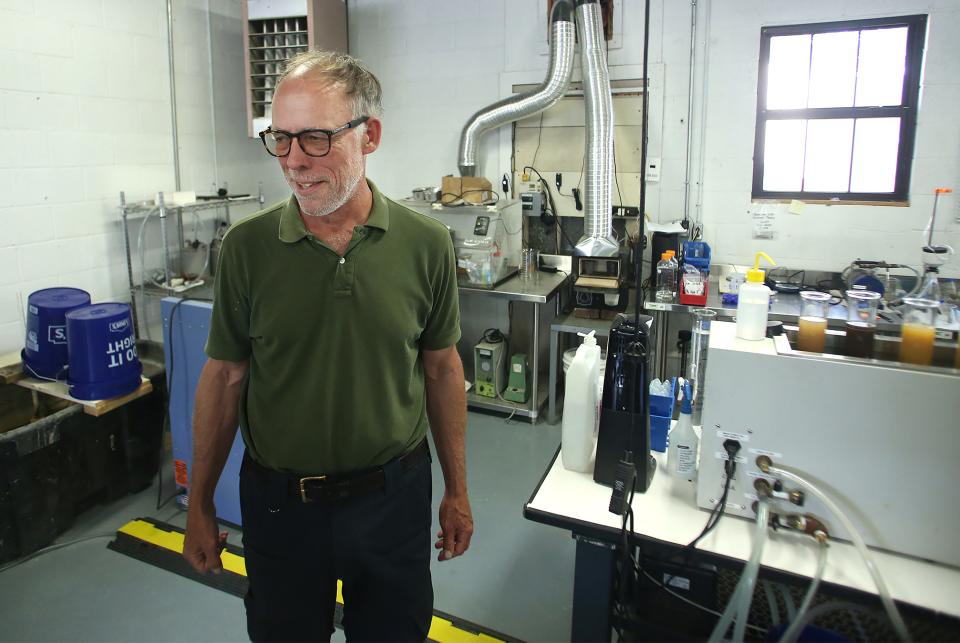
The review of the Downs dirt found it to be consistent with previous samples collected for the last 15 years. It offered no clues to the demise of the nine horses.
Now, for the first time since the track made the historic decision to halt races in the wake of the deaths, crowds will return Thursday to Churchill Downs, marking the start of the September Meet.
But is the racing surface safe?
That’s the million-dollar question.
And that’s what Peterson is sifting through the dirt to find out.
Dark days at Churchill Downs
A marching three-part cadence drums for hours every morning from spring to fall as the hooves of thoroughbreds strike the dirt at Churchill Downs.
On any given day, horse trainers walk the backside of the track as hundreds of horses get ready for a day of training on the surface in question:
Tommy Drury Jr. walks toward the rail as his horses load into the starting gate, ready to practice their charge toward the iconic twin spires of racing.
Steve Asmussen sits on his pony, a cup of coffee from Thortons in his hand.
Bret Calhoun peers out the window in the trainer’s tower, a stopwatch in his hand, waiting for a filly to begin her breeze.
But the last 102 days have been dark ones at the most renowned track in horse racing.
Days at the track without racing are known as dark days. But it’s not just the suspension of racing at the Downs that made the days dark.
Nationally, there have been more deaths of thoroughbreds on racetracks than days since Churchill shut down its track.
Thoroughbred horse trainers said they can’t remember a summer like this one that started with 14 deaths at Laurel Park in Maryland, continued with what is known as the Derby Dozen and ended with 16 deaths at the big meet in August in Saratoga, New York.
Although racehorse deaths account for less than 1% of all starts, the constant spotlight on breakdowns and safety initiatives created by those who never lay a hand on a horse is taking a toll.
It’s left some horse trainers questioning what the industry is doing, from breeding to yearling sales, and whether they want to continue with the job.
“I don’t get up every morning at 3:50 to go to work to injure horses,” a frustrated horseman told The Courier Journal.
New safety initiatives
During the last 102 dark days, Churchill announced a top-to-bottom review of the track, including reviews of the surface by Peterson and others.
While trainers are excited to be back to racing in Louisville, they’re also holding their collective breath about what will happen if horses again start to sustain catastrophic injuries.
“What are they going to do when the first horse breaks down?” an assistant trainer said of Louisville’s track officials. “Move the meet to Turfway,” in Florence?
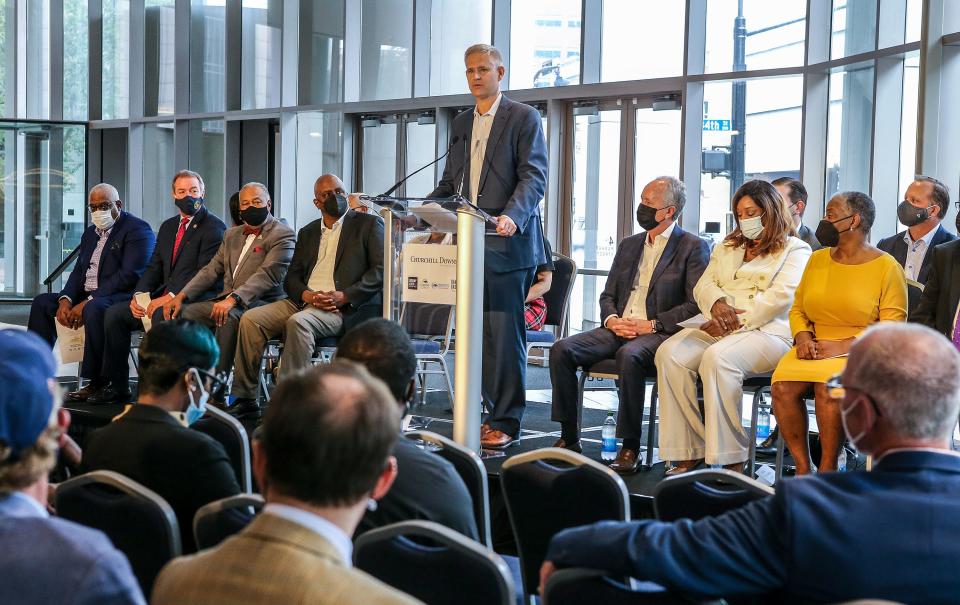
In a second-quarter earnings call in June, Churchill CEO Bill Carstanjen called the deaths “a series of an unfortunate circumstances.” He said the review “didn’t find anything fundamentally wrong or different about our track from previous years.”
In a press release, Churchill Downs Inc. said: “The experts have concluded that the surface is consistent with prior measurements from Churchill Downs in past years.”
That’s because “consistent” is the only word Peterson will use.
Some horse trainers feel the reviews are not truly independent, because Peterson’s lab is funded, in part, by Churchill Downs. Since June, they’ve been calling for reviews by outside experts.
In hopes of improving safety for horses, the Kentucky Horse Racing Commission, the state racing agency, created a new position for a safety steward. Earlier this month, they announced the hire was Beth Bungert, a former assistant trainer who also worked in the racing office of several tracks.
Churchill Downs also created a new backside committee, made up of horse trainers, jockeys, and track management, to provide real-time feedback regarding the surface.
The group is made up of two small-barn, two medium-barn and two large-barn horse trainers, two jockeys, two front office management officials, racing secretary Ben Huffman, Churchill Downs veterinarian Will Farmer and track superintendent Jamie Richardson
“We meet weekly and discuss any changes that can be made to make improvements or if something isn't working, and we need to change the way we’re doing it,” said Tom Van Berg, a horse trainer and backside committee member. “We have to figure out how to do a better job for the horses every day, the best we can, in every effort we can for these animals. They’re our family.”
As racing returns to Churchill for the first time in over 100 days, though, there’s a word Carstanjen, the Churchill press release, experts and even horse trainers don’t say: safe.
'Safe remains elusive'
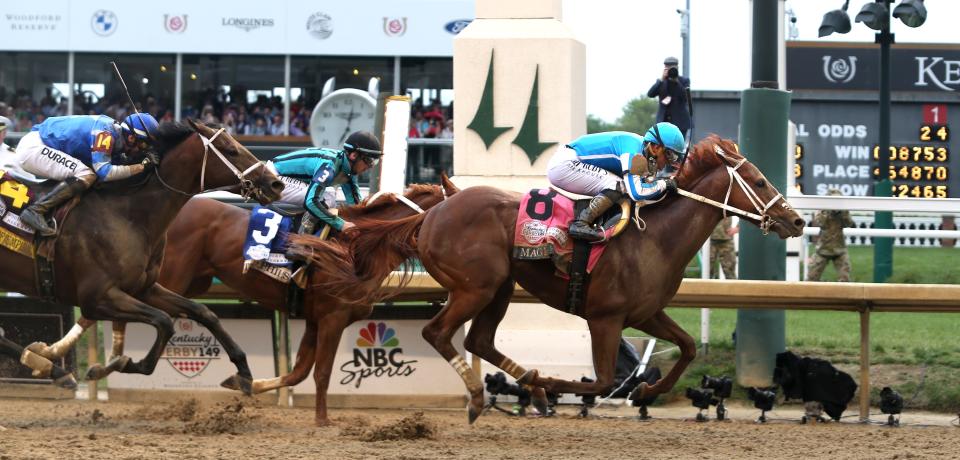
On the day of the 149th Kentucky Derby, following the deaths of two horses, the Horseracing Integrity and Safety Authority (HISA) released a statement regarding its mission to “vigorously protect the safety of our horses and riders.”
In the release, it mentioned how Peterson was retained by Churchill Downs to ensure safe and consistent conditions across racing and training surfaces.
HISA issued a press release, saying: “Dr. Peterson has assured both HISA and Churchill Downs that the racing surface is safe.”
But HISA soon learned the word “safe” isn’t used lightly in the industry.
It quickly revised the statement to say Peterson assured, “there was nothing in the data he collected relating to the track surfaces that indicated any irregularities of concern.”
Three days after Derby, Thoroughbred Daily News, an industry publication, posted a letter to the editor by Dr. Wayne McIlwraith, where he argued Peterson would never have used the word “safe” because “the ability to certify a track as ‘safe’ remains elusive.”
McIlwraith co-founded the Racing Surfaces Testing Laboratory with Peterson, who responded to the letter, saying: “I would never say a surface is safe.”
Why?
“Well, we don’t know,” he told The Courier Journal. “And that’s the thing. We’ve got to know.”
Two days before racing returned to Louisville, HISA released a 197-page report on its investigation into the dozen racehorse deaths. It found no "causal relationship" between the race track's surface and the deaths.
"Despite extensive investigation and analysis, HISA did not identify any singular explanation for the fatalities at Churchill Downs," the report said. "The absence of a singular explanation underscores the urgent need for further action and analysis to mitigate risk stemming from several factors potentially contributing to equine fatalities."
Those actions were to increase data analytics, create a blue ribbon committee and improve veterinary screenings.
During a press conference earlier this week, HISA CEO Lisa Lazarus said the review is based on “tremendous amounts of historical data.”
But Peterson says testing on racetrack surfaces is in its infancy.
“Even for the big tracks, it’s maybe, at most, a toddler,” he said. “You talk the larger industry, it’s a newborn. There are tracks that have been running for hundreds of years that we’ve never tested.”
Rocks on the track?
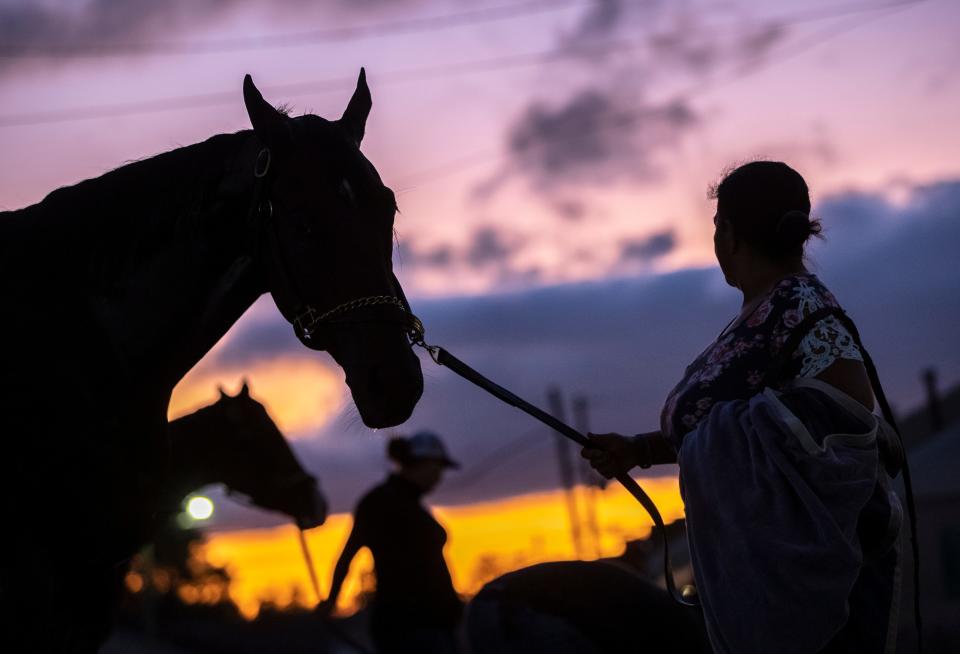
The horse trainer moved his boot in the gravel, then peered at the empty horse stall.
A man and his daughter walked up to the barn.
“Can we look at your horses?” the man asked, nodding toward the little girl.
“Absolutely,” the horse trainer said, masking the pain in his voice.
The man and his daughter had no idea that shortly before their visit, the trainer had to make the decision to euthanize his horse ― one of the nine who suffered an injury on the track in the run-up to the Derby.
Experts say there is no common denominator between the deaths.
“Except that they all happened on the tracks at Churchill Downs,” a horse trainer with four decades of experience told The Courier Journal.
There have been concerns, considering Churchill Downs’ constant construction ahead of the 150th anniversary of the track, about rocks in the track, which can lead to horse injuries.
This spring, horse trainers whispered loudly about how prevalent they were. Some picked them up and took them off the track. Some have seen them while walking the track.
The HISA report released Tuesday confirmed the presence of rocks in the track. HISA had another equine surface expert, Dennis Moore, review the track surface in June. Because of the rocks, he recommended the track be sifted at the end of this season.
In the HISA report, Churchill Downs stated it believes it "resolved the issues of rocks on the racetrack" and would sift the dirt in 2024 "if needed."
Historically, Churchill Downs’ maintenance crew sifted the sand, but horse trainer Ron Moquett and others believe the wet spring didn’t allow the dirt to be sifted well enough. (Moquett is also on HISA's horseman's advisory committee.)
"There was somewhat of a rock issue back in spring even though that was completely unrelated to fatalities," Lazarus, the HISA CEO, said. "In the event it returns again, that material will be screened again at the close of this meet. Churchill has informed me that any new material they bring in, they do put that through a new screen."
The other thought is it’s hard to contain a construction area that borders the rail of the dirt track. The construction involved The First Turn Club, a $90-million project that added more than 5,000 outdoor seats south of the grandstand.
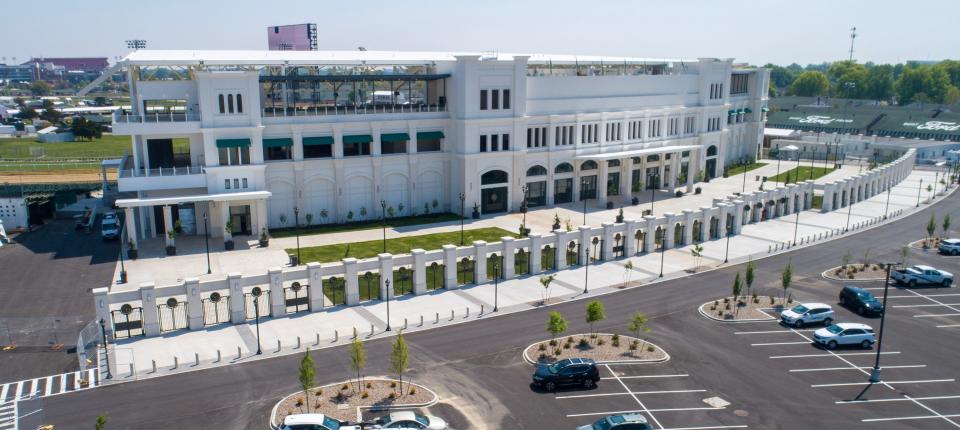
There’s the possibility, too, that construction equipment picked up gravel from the construction site and the barn area, where there’s gravel between the barns.
HISA requires all tracks to catalog the type of equipment used on and around the track. In the Tuesday HISA report, Churchill Downs acknowledged it updated new tractors and harrows in mid-June.
The Courier Journal requested interviews with Churchill Downs track superintendent Jamie Richardson multiple times, but didn’t receive a response from Churchill Downs.
So, if horses do start breaking down, how many would it take for HISA to recommend Churchill halting racing again?
"We don’t look at it from a numerical standpoint, but from a case-by-case basis whether we have a clear explanation," Lazarus said.
HISA does not have the ability to shut down a race track. It is able to pull a track's simulcast, which allows para-mutual wagering, which is what ends up funding the purse money for the races.
On a recent morning at Churchill, Moquett leaned against the rail.
“There are less rocks than there were (in the spring),” Moquett said. “Everything seems good, but until we have that first week of clean racing, which is what everyone’s goal is ― to come back safe and sound.”
His voice trailed as he looked back in the direction of the track surface.
“It’d be different if we ever put our finger on it: ‘This was the reason. We fixed it. And we moved on,” he said. “Nobody has ever said exactly, for sure, what the reason was.
“So, there’s an uneasiness.”
Reporter Stephanie Kuzydym can be reached at skuzydym@courier-journal.com. Follow her for updates on Twitter at @stephkuzy.
This article originally appeared on Cincinnati Enquirer: Racing back at Churchill Downs after horse deaths. Is the track safe?

